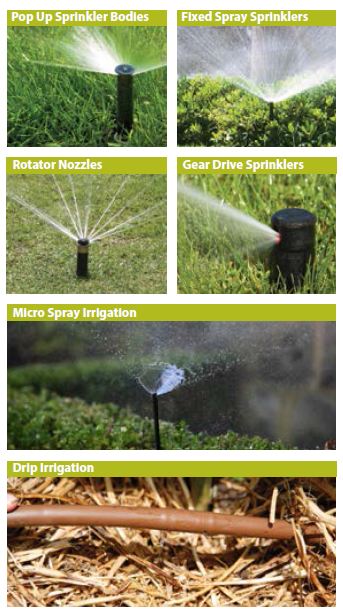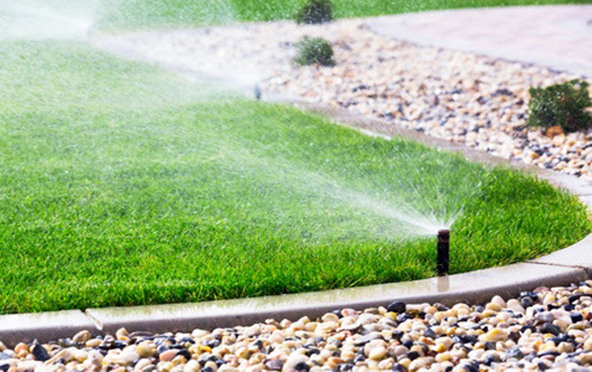 Irrigation systems are the best investment you can make to save your plants and your wallet. Our sprinkler solutions can aid turf areas while we install drip lines into beds to deliver water to plant roots with minimal water use. Successful Irrigation systems require regular service maintenance to up keep the well being of all plants. Our experts recommend the quarterly maintenance program which guarantees a 2 year life warranty on all plants, irrigation and lawn. For only $90 we will service and change batteries, all nozzles, adjust sprinklers, adjust seasonal water schedules and inspection of all plants. Irrigation systems are simple and efficient way to water your garden. Here at Dr Garden we pride ourselves on our dynamic approach to our customers irrigation needs. Save time and get the best watering results for your garden.
Irrigation systems are the best investment you can make to save your plants and your wallet. Our sprinkler solutions can aid turf areas while we install drip lines into beds to deliver water to plant roots with minimal water use. Successful Irrigation systems require regular service maintenance to up keep the well being of all plants. Our experts recommend the quarterly maintenance program which guarantees a 2 year life warranty on all plants, irrigation and lawn. For only $90 we will service and change batteries, all nozzles, adjust sprinklers, adjust seasonal water schedules and inspection of all plants. Irrigation systems are simple and efficient way to water your garden. Here at Dr Garden we pride ourselves on our dynamic approach to our customers irrigation needs. Save time and get the best watering results for your garden.
| Our range of irrigation systems include: |
| Pop up Systems Rain Systems Drip Systems Manual & Automatic Systems |
Which irrigation system is best for you?
- Sprinklers can cover large areas
- Manual sprinklers require you to open the valve, time the watering yourself and then shut off the flow
- Automatic sprinkler systems offer the benefit of programmable controllers
- Make sure you set automatic sprinklers correctly and adjust it as conditions change
- Water early in the morning to reduce the evaporation rate
- If water runs off your yard, split your watering times into two or more sessions
- Be sure to turn off your system if you’re getting enough water from rain showers
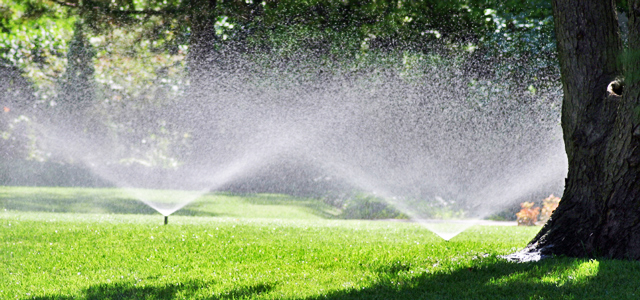
- This system is good for a small yard or for watering individual plants. Drip irrigation is highly effective at supplying one to four liters of water per hour directly to the soil. The advantage of drip irrigation over sprinklers is that there is little water loss due to evaporation or runoff. It’s particularly good for mulched areas because it can directly soak the soil without washing away the mulch.
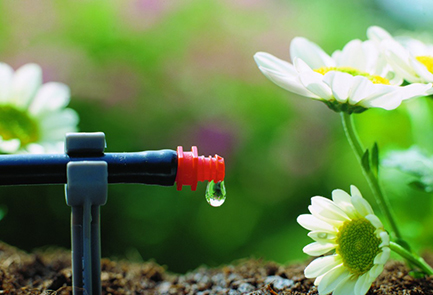
- The simplest and most common irrigation system is a garden hose or a portable sprinkler. The advantage of hand watering is that you can easily avoid over watering. Use a nozzle to control the flow. When water stops being absorbed into the ground, move to another location. Wait an hour, and then plunge a long screwdriver or space into the ground to check that the soil is moist to a depth of six to ten inches.
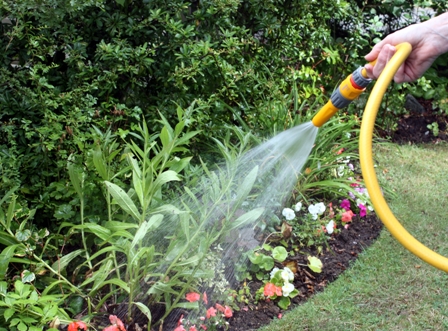
Rainwater Conservation System A rainwater conservation system involves collecting rainwater from the roof and storing it in a tank for later use as irrigation water. Recycling rainwater for use on garden beds is an excellent way of reducing household water that must otherwise be purchased from water companies. Due to the fact that a considerable amount of household water goes on the garden, this is a great way of saving money whilst conserving the amount of water in our storage dams.
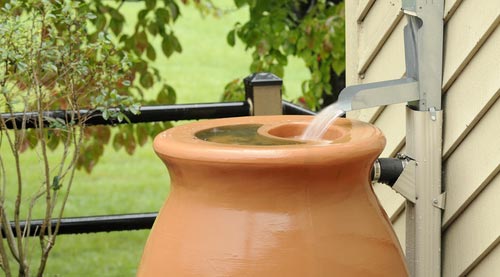
- Rainwater can be applied from the tank to the garden by any of the following methods:
- Gravity-fed hose irrigation
- With a watering can – most useful to water pots and containers
- Pumped from the tank to irrigation systems within the garden
For a small or inner city garden where tank size is limited, a tank connected to a gravity-fed hose and supply for hand watering is most appropriate. The minimum tank size recommend for use with a pump-fed irrigation system is 2000 litres. Mains water can be linked into the system and accessed by an automated switch-over mechanism as a backup water source if tank water runs out.
